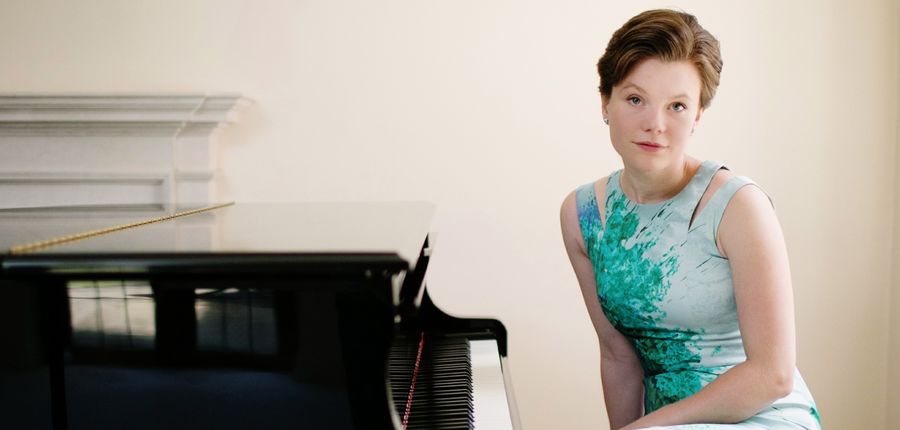Philharmonia Orchestra & Cardiff Ardwyn Singers – Holst’s The Planets
St David’s Hall
Tuesday 25th June 2019
The final concert of the International Concert Series at St David’s Hall should always be big. The Philharmonia did not disappoint in this concert to wrap up a stellar season of music making from some of the world’s finest orchestras.
Professor Brian Cox on our screens has absorbed us with The Planets, an extensive series cataloguing each of the celestial objects in our solar system. This space fever reaches new heights as we all seem to be looking to the skies for creativity, business opportunities and even a new life (though that is a while away, let’s be fair). Making great use of this interstellar inspiration, the Philharmonia has picked fitting music that will prove to be a crowd pleaser and also present challenging ideas.
Opening the night was Sibelius and his ‘At the Castle Gate’ from his Pelléas et Mélisande suite. Though this strange and tragic French love story is better remembered from Debussy’s opera, this fleeting piece was famously made majestic thanks to its use in The Sky at Night opening credits. This is striking stuff thanks to the genius of the Finnish composer’s colour palette and rich harmonies, that easily stir the senses. Music from Close Encounters of the Third Kind by John Williams made for the next impressive musical course. From the harsh and dense opening in this suite, up to the better known Williams we all know and love from Hollywood blockbusters, there was a lot on offer from this mere ten minutes the orchestra played. The famous melody the aliens display is mimicked by the humans in the film, here concluding the piece on the celesta. This conjured up wonderful visuals, a brilliant cinematic endeavour, as stills from the film were seen on a large screen above the players.
Next followed a rather impressive addition. The Shining One is a petite piano concert by French composer Guillaume Connesson, who sure likes variety in his writing style. Here, his inspiration comes from the lost world novels of Abraham Merrit, rich in lore as the title comes from a type of creature (from The Moon Pool) who captures humans, inflicting a sense of ecstasy and horror. Though the piece feels terrible short to be a concerto proper, there are some ravishing moments here with sparkling orchestration and the talents of soloist Clare Hammond, who offers some rhapsodic flashes throughout. I’ve been raving for years about Hammond, an outstanding pianist whose golden reputation only seem to reach new heights. Though I feel that she was criminally underused here. Not even an encore!
The Planets by Gustav Holst. We all know. We all love it. Few pieces of orchestral music have capture the public’s imagination as well as this. Though it should not be considered as a one hit wonder (I strongly encourage people to check out the rest of the Holst canon) I think most composers would envy the love this stand alone suite gets. It’s inspiration might be the Zodiac as well as the actual planets themselves, though it is the variety in the piece which makes it so appealing. Let’s break down each moment:
Mars, the Bringer of War: A pounding few minutes. You can hear John Williams all over this. The brass come into their own here. What an opener!
Venus, the Bringer of Peace: A serene cleansing of the palette, with an aching French horn solo. It’s light and fluffy like a baked potato, though much more satisfying. A tender moment that is hard to resist.
Mercury, the Winged Messenger: This section never quite sits still, its constant flight has an infectious melody and all round vibrant mood. Delightful.
Jupiter, the Bringer of Jollity: A smiley romp that is hard not to to jig along to. Listen out for the melody for ‘I Though to Thee My Country’, which Holst would later recycle as hymn.
Saturn, the Bringer of Old Age: Perhaps my favourite of the suite (a tie between this and Neptune) this awe inspiring vision features megalithic chords which pound you on the head. The rest bite is eternal strings who appear to mock the listener through this musical hourglass and the rarely used organ who deep pedals cleans away any bad omens. A truly jaw dropping highlight.
Uranus, the Magician: A cracking, mischievous section featuring shrill, shrieking piccolo, slamming brass and a circus like xylophone. The Scorcher’s Apprentice is an easy comparable.
Neptune, the Mystic: This luscious conclusion is perhaps the most inspired of them all. We feel a sense of departure here, as the orchestra offers exquisite moments hard to resit. The patient, yet fabulous Cardiff Ardwyn Singers sung offstage in perhaps one of the most inspired decisions for 20th century orchestral music. They wordless vocalising is an almost unbearable drawing out of the piece as they sing for an eternity, before ever so quietly drifting away in to the universe. The silence which follows is both powerful and deeply poetic.
Video work during The Planets might have distracted but seemed to compliment the piece itself. A CGI recreation of the Mars Rover landing and the Cassini satellite arriving at Saturn were highlights. The opening of Saturn and the abstract use of the planet’s rings was a clever decision. Though the conducting of Jamie Phillips was not always visible due to the focus on the screen, he did keep a wonderful balance on the podium, with firm control and impassioned musicality.
This was a marvellous space adventure from this awesome orchestra who enthral us every time they visit the Welsh capitol.
Rating: 4 stars
St David’s Hall International Concert Season returns this autumn.
Photo Credit: Buxton Opera House Website

